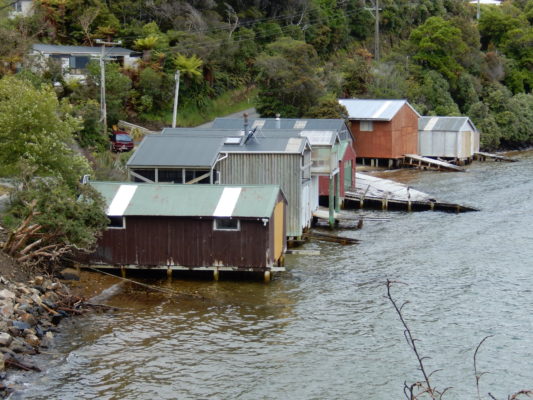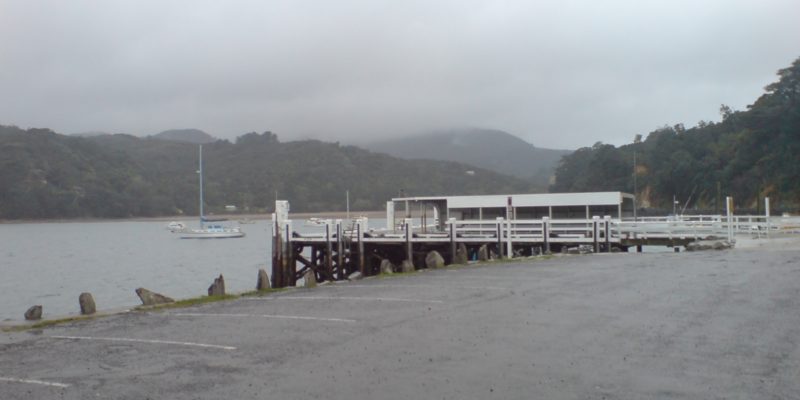Predator Free Great Barrier or Stewart Island? It’s already technically feasible. But is it socially feasible?When it comes to complete eradication of predators on inhabited islands there’s a lot more to consider than just the conservation benefits and technical aspects.

Biologists need to take the ‘people stuff’ into consideration.
“Historically,biologists have struggled to engage successfully in the social components of eradication planning. Island communities have unique features that require consideration in eradication planning. Social impact assessment is a powerful planning tool used widely outside of wildlife management. We outline the core components of a social impact assessment as it could be applied to eradication planning on inhabited islands.”
So what are some of the unique features of island communities?
“The focus of this article is on islands with relatively small populations and lower population density when compared to a mainland population. This commonly means a more limited range of economic activity and employment opportunities from which residents can derive livelihoods, with a strong focus on primary production. Isolation and difficulty of access is another island feature, although this varies depending on the regularity of transport by sea or air. The length and difficulty of the sea passage is a vital factor in defining the character of many island populations, leading to the characteristics of ruggedness, independence and stoicism frequently attributed to their populations. Another feature is the strong sense of place that comes from the strong physical definition of the island’s coastal boundary. There is a shared identity and history of occupation, and often a robust pursuit of survival of the population and their way of life.”
What’s more it’s not just the permanent residents who may need to be taken into account.
“Where holiday homes and accommodation are available, visitors turn over on a regular daily, weekly or seasonal basis. The definition of an inhabitant of an island, in the sense that they have a legitimate voice with regard to pest eradication, thus also becomes important. In the broadest sense, inhabitants of an island must include land-owners, whether resident or absent (‘off-island’), as well as anyone who considers the island their primary place of abode or employment, regardless of their origin.”
Eradication planners cannot assume that because residents share a common island lifestyle, that they also share a common point of view.
“In respect to island social characteristics, it is evident that even with small populations, inhabited islands can have relatively complex social characteristics with considerable potential diversity of views. Management is therefore almost always about working with different social groups, not just a few individuals. This social diversity provides a context where tools from the social sciences can assist in planning for, implementing and managing wildlife management strategies, including pest eradications.”
There may be strong support already for pest control on an inhabited island, but that doesn’t necessarily mean that a proposed eradication will share the same local support.
“Complete pest eradication from an island differs from undertaking pest control, and similarly the process of obtaining community support for eradication differs markedly from that required to undertake pest control. Complete pest eradication from an island requires almost total community buy-in. So, while recognising eradication is only one option for pest management, the level of community support required for eradication must be more complete than that which is required for control alone.”
There is also the issue of how the eradication is carried out.
“Options for introduced animal eradication on islands are further confounded by the limited number of eradication tools available to managers; for example, cost-efficient rodent eradication on large islands is almost exclusively achieved with aerial distribution of second generation anticoagulant brodifacoum baits. This limited choice of tools further complicates the challenges required to obtain community support, making alternative management options that do not achieve complete pest eradication possible compromises within a comprehensive conservation decision-making framework.”

Maintaining a ‘predator-free’ status also has ongoing implications for the lives of the island residents – particularly if tourists and holiday-makers are frequent visitors.
“Eradication of an introduced animal from an island is also a conservation investment that requires biosecurity effort to prevent reinvasion. An island community thus also plays a major role in the long-term success of an island restoration project, when it includes introduced animal eradication and subsequent biosecurity. Also, the implementation of biosecurity on an island following eradication is sometimes perceived as a significant barrier to eradication due to the social cost imposed by the increased logistical burden.”
There are, of course, many positive impacts – no predators, enhanced wildlife and ecosystems and the potential lifestyle and tourism benefits that can bring. So how do you assess the costs vs benefits and determine whether an eradication project is socially feasible?
“Social impact assessment (SIA) can be defined as the processes of analysing, monitoring and managing the intended and unintended social consequences, both positive and negative, of planned interventions and any social change processes invoked by those interventions. SIA is used internationally to predict and manage the social impacts of a project, plan, policy or programme, often alongside environmental impact assessment, although typically less often. The process generally combines independent social research and monitoring (during project implementation), public involvement and elements of social and community development.”
The article’s authors are keen to see SIA processes included in New Zealand’s own island eradication proposals.
“We consider SIA should be a key tool in the planning and implementation of wildlife management, particularly pest eradication, on islands. It is a way of working constructively with island inhabitants and stakeholders to consider the feasibility and planning of eradication, including any technical options for undertaking the eradication, and opportunities for local involvement in them. Just as identifying the biodiversity outcomes of an eradication programme is important, so too is determining the social impacts on island inhabitants and communities in the short and longer term.”
They also outline what some of those impacts might be.
“Examples include the impacts that eradication activities and ensuing ecological changes have on local land uses including agriculture, tourist activity, employment, island collective actions, identity and the level of cohesion in the community. With community support, these social changes will have an important influence on the successful implementation and viability of biosecurity to prevent pest reinvasion.”
They stress the importance of an impartial assessment process.
“SIA should be conducted autonomously from the agencies undertaking the eradication to maintain impartiality and ensure community buy-in to the process. However, those undertaking SIA must also have the requisite level of technical understanding of how any eradication might be undertaken.”
Each island community is likely to be different – as the authors found out when they did their own SIA analysis.
“We demonstrated how a social profile of four inhabited islands in the Hauraki Gulf of New Zealand, using a multi-method approach, revealed the four communities were in fact quite diverse and each must be treated distinctly. Just as ecologists would recognise the context-specificity of pest identity (e.g. foxes are different from cats) and habitats in planning eradications, it is equally important to acknowledge differences among islands in their social make-up, and likely differences in how they will respond to an eradication proposal, as has been reflected by international experience.”
The full research article is published in the Australasian Journal of Environmental Management in a special issue on ‘Wildlife conservation management on inhabited islands’. Only the abstract is freely available online to those without institutional access.
Social assessment of inhabited islands for wildlife management and eradication (2018)

